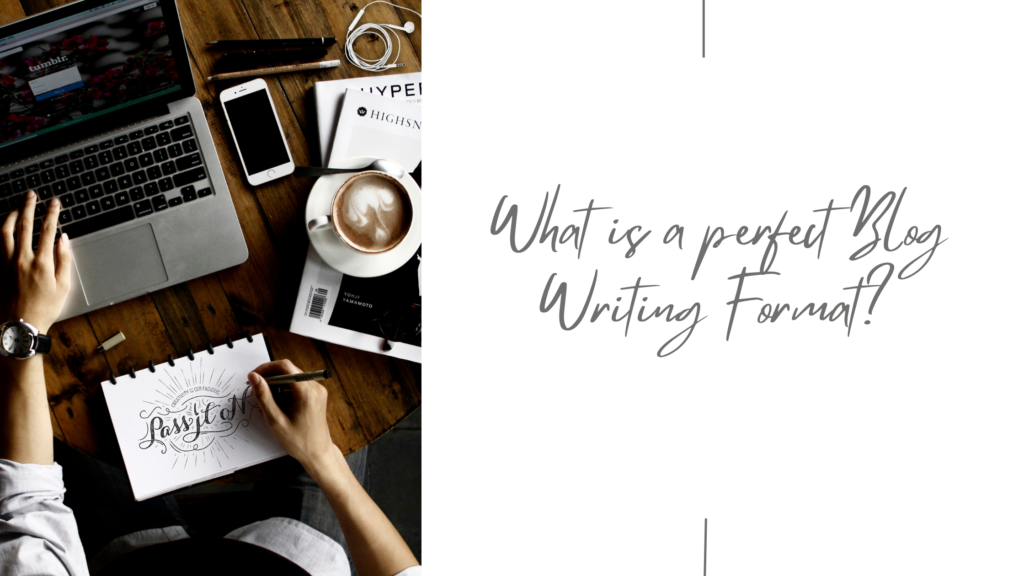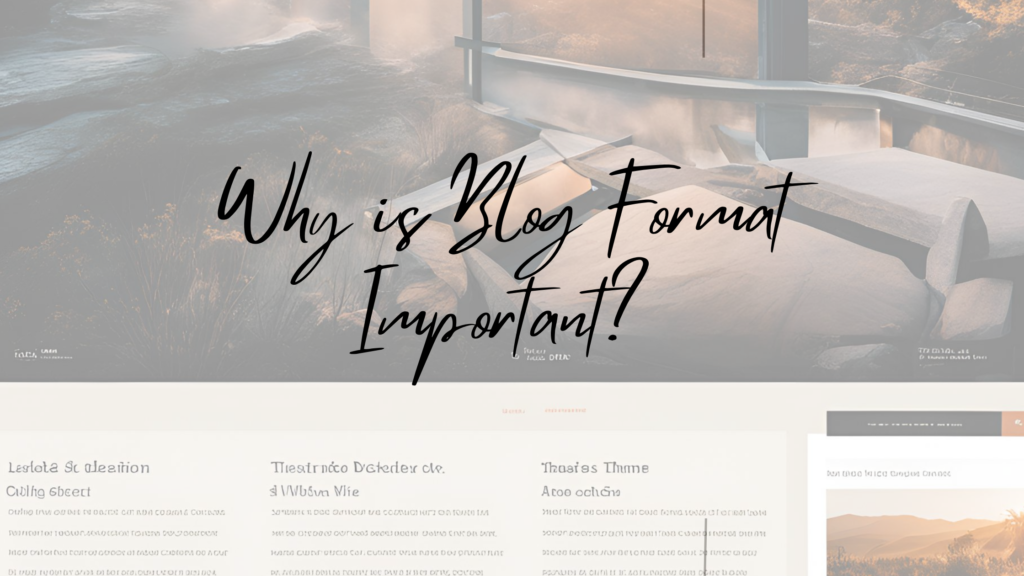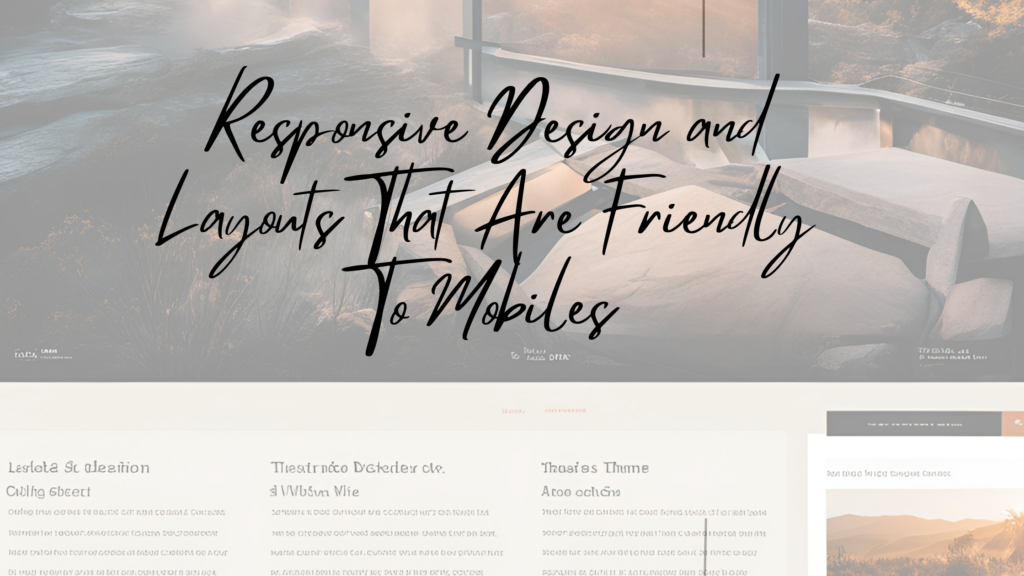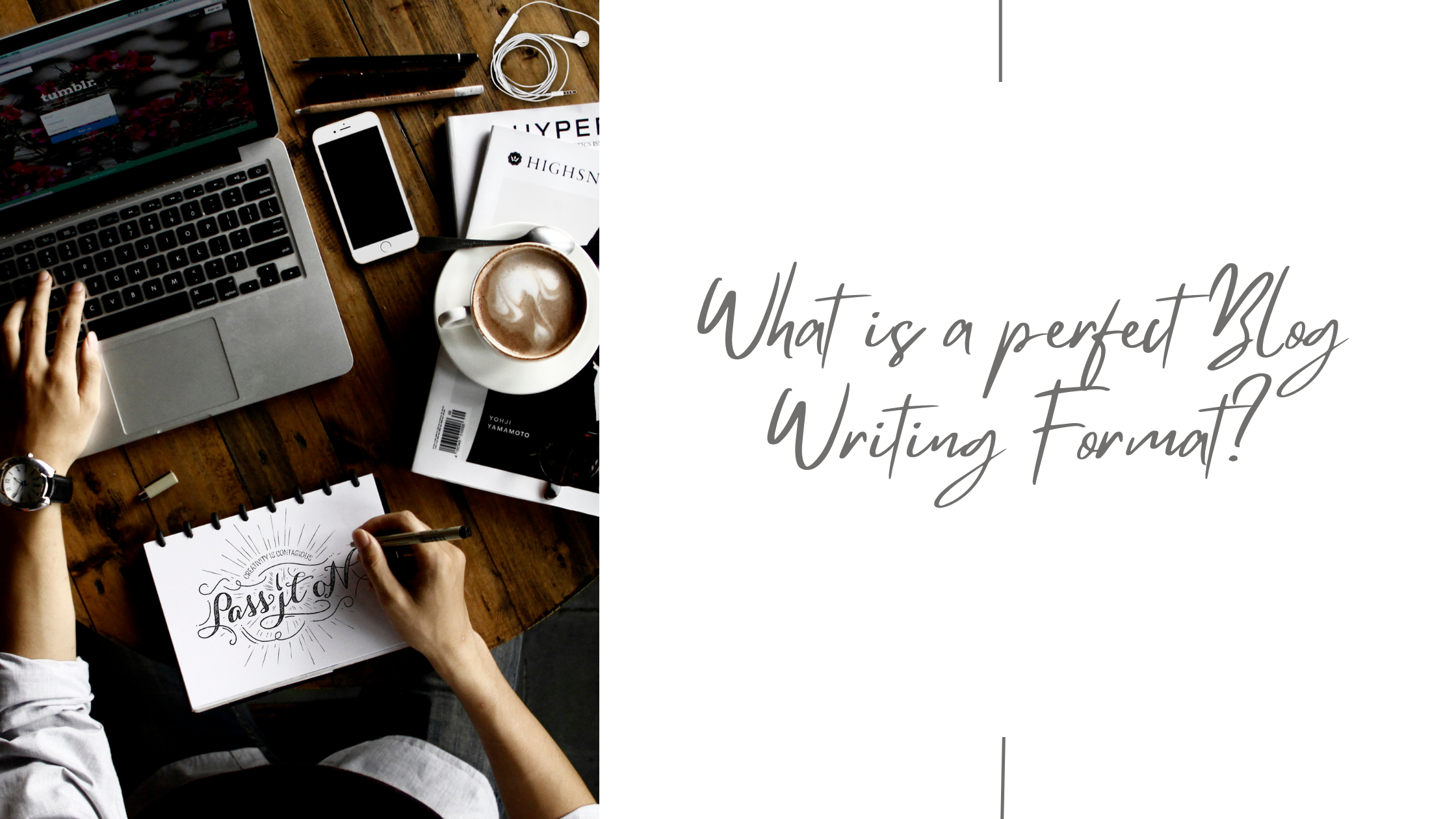Many writers struggle with the task of crafting captivating blog posts that can hold interest and engage readers in today’s competitive online environment. This is where strategic blog writing format comes in, that improves readability, boosts SEO rankings and prompts user engagement. The following article explores necessary formatting steps – clear subheadings, attention-grabbing visuals – that can turn your content into a valuable resource for your readers.
Do you need assistance in creating interactivity and raising the visibility of your blog posts? Rest assured that you are not alone. In today’s crowded online space, many writers grapple with the problem of producing good content that stands out. Using a blog writing format could be the determinant factor to success or failure.
This article unveils secrets on how to create amazing articles using winning blog post formatting! Let us delve into structuring your masterpiece from listicles, research-backed advice on image use, editing insights, proofreading techniques, and much more.

What is a Blog Writing Format?
A blog writing format refers to a specific arrangement of page elements such as title creation, subheadings usage, paragraphing and visual element supports like images or videos in your post which help make it compelling for users. Thus, adopting a consistent blog writing format will enhance readability; sustain reader interest and improve user experience.
Through well-thought-out formats readers can explore texts smoothly. They enable fast comprehension of intricate ideas thus enriching search engine optimization (SEO) benefits so that more organic search results are brought thereby improving your visibility in them. A successful blog post formatting technique related to your topic of discussion and audience preferences may serve as an instrument for building connections with thousands of visitors who would love come back for more valuable information.

Why is Blog Format Important?
Readability and Clarity Improved
Using a clear cut blog writing format improves how easy it is to read through your posts. By breaking down tough topics into headings, subheadings; short paragraphs, bullet points or numbered lists thus including pictures or other media types between blocks of texts allows readers to navigate easily through these complex subjects without any hassle that may arise.
User Engagement Enhancement
When blogs have readable fonts, attractive styles in addition to colors all combined together they tend to perform better than those which do not posses these characteristics. On average internet audience tends stay longer on website viewing extra pages leading to growth of various metrics like sessions per user or average session duration hence benefiting SEO wise to your business.
Enhances Credibility
When a blog follows the same professional writing style in every post, it is regarded as a reputable source by its visitors. This trust is built based on the correct use of grammar, accurate presentation of facts and figures, and so forth. Because of that people continue coming back to read your articles or even refer their friends to visit your site.
Encourages Article Shares and Virality
Articles which are easy for the users to understand are shared by them with their social media friends more frequently. Moreover, when an article is well organized with catchy titles, people could scan through quickly understanding the details they are looking for thereby boosting sharing links since they believe in its authenticity.
Better Search Engines Ranking Potential
Quality-focused blog writing formats can potentially contribute to higher rankings not only among readers but also among search engine sites themselves.
Improved Time Management and Streamlined Writing Process
When you stick onto a consistent format in your blog posts’ drafts then it helps you finish faster. Having already planned out your layout, you are able to concentrate on creating good content without having any problems trying to rearrange all new articles meant for publishing purposes. Following this streamlined approach saves time during editing while also increasing production rates of quality articles.
What is the Correct Format for Writing a Blog?
The format of a blog post depends on its objectives, target audience, and topic. However, one must follow some standard formatting guidelines when writing a post to make it engaging and accessible.
These are ten key components to consider when deciding on the right format for your blog:
Clear structure: Begin with an introduction, then section out the body text through subheadings before finally concluding. It makes it easier for readers to know what you are saying quickly while also making it possible to go through longer posts easily.
Engaging headlines: Captivating titles should be chosen which evoke curiosity or indicate subject matter. Be brief and informative; at the same time, mind about keywords that search engines will use in making content relevant.
Subheadings: Have clear subheadings throughout your article body. This helps readers in skimming content as well as separating long texts into small sections so they can easily understand the main ideas in between them.
Short paragraphs: Keep shorter paragraphs – 50-100 words–with no more than 15-word sentences to make reading easy rather than tiresome by reader’s eye.
Lists and bullet points: Use bullet or ordered lists sometimes where there is too much information as these convey contents more briefly and efficiently compared to large blocks of text.
Visual elements: Images help break up large chunks of written content or elucidate knotty ideas. Thus, insert charts or graphs where necessary
Conversational tone: There should be balance between professionalism and casualness so that you neither scare your readers with jargon nor bore them with difficult language.
Call-to-action (CTA): End each post with a clear CTA that motivates the reader to share thoughts on social media platforms such as subscribing to newsletter or downloading offer etc
Internal and external links: Throughout your post, use appropriate internal and external links within your articles linking back related articles on your website or other credible sites.
Optimization for SEO: A blog should be search engine optimized. Use keyword research, and include important key phrase in your title, heading, and text as well as adhering to recommended design of keyword density.
These guidelines will help you write a blog post that is engaging, informative and easy to understand. Moreover, it will position you as an expert in your field. With these elements seamlessly incorporated into various blog formats like listicles, how-to articles, comparison/review articles or guides—giving the advantage of adjusting posts structures subject to the purpose they serve.
How to Choose the Right Format for Your Blog Post
The choice of the right format can either keep users on the page or make them leave it forever. Understanding why you are writing this piece of content and who your target audience is will help you define its structure that will resonate with readers in the most natural way possible. Let’s go through four popular blog post formats: listicles, how-to articles, comparison/review articles, guides.
Listicles
Among the most engaging and shareable blog post formats are listicles. They present information in a simple, organized manner through lists, making complex topics more easily digestible for readers. This format works well when you want to provide a quick overview of ideas or strategies, rank items based on specific criteria, or share several tips on a topic. This is also a practical way to approach content for individuals who tend to scan rather than read.
When writing listicles remember the following:
Headlines that are eye catchy and indicate how many points are covered.
Guarantee that each point benefits readers.
Adding subheadings improves readability.
Keep your list short enough not to overwhelm your reader.
Tips for optimizing blog posts for SEO through proper formatting
Keyword placement and utilization within headings, subheadings and content body
We surely know how much power keywords hold when used correctly but have you ever thought about where your keyword should be in relation to your content? Indeed, placement matters strategically big time.
In order for it to be effective and targeted at the search engine optimization (SEO) objectives of your site, you should consider putting the primary keyword – at the title section: which helps attract both readers’ attention and search engines; and then in H3 tags: since H2 or larger size heading carry relatively more weight with search engines.
Throughout the text body: However, be careful not to overdo it. Stick only to natural thickness with readability as the main concern.
The golden rule here? Intent-based keyword optimization – where keywords are aligned based on volume and user intent!
Title Tags essentially label your online content – these guys help Search Engines make sense of a page’s content.
Enhancing search engine visibility via meta tags, title tags and meta descriptions
Metadata sounds like invisible housework but it’s quite valuable in terms of getting noticed by Search Engines.
Meta Descriptions give potential visitors an insight into what exists beneath the clickable link – Think of it as those back-cover snippets that determine if a book is worth investing time into.
It is important, however, not to force your target keyword during these fields so that the overall flow and sense remain unaffected.
Optimising URLs for better ranking on search engines
Lastly, optimizing your URL isn’t just about good looks; it plays a role in style for blog posts and SEO. When structuring your URL:
Keep it concise: SERPs tend to favour shorter URLs.
Use keywords: But don’t go overboard like stuffing them everywhere (a big no-no!).
URLs that are hyphenated between words are easily understood by people and search engines alike.
Nevertheless, a neat-looking URL can act effectively like an inbound marketing tool leading readers straight into your blog!
Therefore, considering such aspects helps improve user experience while earning you better rankings from Google – killing two birds with one stone!
Mistakes To Avoid When Formatting Blog Posts
Packing Content With Excessive Styling Or Visual Elements:
“Less is more” applies even in blog post style. Whereas adding visual elements and styling options like boldface, italics, underline , flashy colors or heavy graphics may seem appropriate ways of underscoring important points and breaking monotony excessive usage might be counterproductive.
Overcrowding content with excessive styling or visual elements can make it hard for readers to focus on the actual content, and consequently they may fail to identify key points within your message. The post’s overall appearance becomes untidy instead of enticing.
To maintain an engaging but simple blog writing style:
Use only a few visual elements: Images should complement the text, not confuse it.
Stick to basic text styles: Keywords can be written in bold or italics if need be; however, many bright colors and fancy fonts may render the writing illegible.
Overlooking Proofreading And Editing For Grammar And Spelling Mistakes
Even a perfectly formatted blog post may have spelling mistakes or grammatical errors. These mistakes undermine your credibility because they suggest carelessness. A site that does not observe language precision will find it hard to gain trust and retain readership.
In order to avoid such pitfalls:
Engaging in thorough proofreading after writing: Read aloud where possible for better error detection.
Using grammar-checking tools like Grammarly.
Hiring professional editing services is feasible budget-wise.
Remember, God is in the details!
Improper Use of Header Tags for SEO
Header tags are not just buttons that are used to increase readability but also form part of the search engine optimization process. However, this element often times misused or ignored altogether thereby leaving a lot to be desired in terms of improving visibility of blogs on search engines.
When header tags are incorrectly used, they confuse the hierarchical structure which Google crawlers use to understand contents and relevance to user’s query.
Using header tags effectively involves:
Use an H1 tag as your title consistently.
Organize your subheadings accordingly: H2 first, followed by H3 and so on down the list.
Strategically place keywords: sprinkle important phrases within headings without making sound unnatural.
If you avoid falling into these traps, your blog writing format can be readable while still being optimized for SEO. Keep them in mind as you tackle each post, striving relentlessly for betterment.
Best Practices for Formatting Blog Posts for Mobile Devices

Responsive Design and Layouts That Are Friendly To Mobiles
Therefore delivering an interactive reading experience on handheld devices requires one to embrace responsive design. This type of layout automatically adjusts itself according to the size of screen without affecting readability or forcing unnecessary scrolling or resizing from users end.
Keep it simple: Ensure a clean and minimalistic blog layout for easy movement around it.
Self-adapting responsiveness: Columns, pictures, menus and text should beautifully fit into any device; be it a phone or tablet screen.
Legibility matters: Always maintain appropriate font sizes; those that do not appear too big nor too small to read comfortably with ease.
When designing with mobile-first approach using correct blog writing format, always remember you have limited space. Consequently each aspect should serve its purpose — enhancing readability while offering visually pleasing aesthetics without cluttering up the space.
Tips on How To Optimize Images And Media For Mobile Screens
Images and media elements usually act as focal points within any form of written works – if combined well with devices.
Before posting images on your blog, compress them to avoid slow site speed.
In case of the possibility, go for SVG (Scalable Vector Graphics) instead of PNGs or JPEGs because they scale better.
Instead of embedded videos that take ages to load use HTML5 videos.
Watch out for the media formats which can interfere with fluid reading when it comes to smaller screens: these are pop-ups and other intrusive ads partially obstructing visibility of your content.
Choosing a Font That Works Well On Smaller Screens
The font that you choose will have a big effect on how your readers perceive your posts. On smaller screens, you must select typefaces that improve the readability of your blogs.
It is better to stick with sans-serif fonts like Open Sans or Roboto which are generally easier to read on digital platforms. This makes sure that font sizes between 14-16 points offer relaxed reading experiences without forcing one to zoom in every line of text.
Line spacing also matters – strive for at least 1.5x in terms of spacing ratio so as to enable easier visual scanning from one line to another.
Finally, remember that ‘white space’ is the well-placed silence in blog formatting. It gives not only eye relief points, but also interrupts the flow of continuous block text.
In conclusion, appropriately tailoring your blog writing format for mobile audiences isn’t just about increased accessibility; it’s about conveying respect towards your readers and their chosen modes of interaction with your content.
Creating an Engaging Title For Your Blog Post.
Keep it Concise and Relevant
A compelling blog post title should be concise yet informative enough to give a reasonable view on what the content includes. Make sure you use relevant keywords within your headline to reflect its subject matter – preferably in 60 characters or less. Remember that search engines’ truncate longer titles which are harder to read and less clickable.
Use Numbers and Action Words
Use numbers where applicable in your headlines; research has shown that they perform better than other types of headlines. In addition, go for action words that attract readers’ attention by evoking urgency or curiosity. Words like “discover,” “reveal,” or “learn” can pique interests of readers and make them more engaged with your content.
Target Reader Emotions
Get involved with human emotions when making up your headline by addressing the reader’s aspirations or desires. A case in point is the blog post titled: ‘7 Ways to Boost Your Confidence Today’, which speaks directly to people looking for confidence improvement strategies.
Understanding Heading Depth
When outlining your new blog post, one of the most important things to think about is heading depth. Using headings properly not only makes a document more readable but also gives it a better look. The following are some suggestions on how to arrange headings correctly:
For the main title, which should contain your primary keyword, use H1.
A consistent order should be followed with H2 for main sections and H3 for subsections.
Every headline must be informative, pertinent, and brief—preferably 5-9 words long.
Include relevant keywords in subheadings where possible without compromising readability.
By obeying these rules, readers will have the ability to browse through the text quickly until they identify exactly what they want.
Create a Table of Contents
Longer articles or guides benefit from adding a table of contents as it helps in navigating around them and enables readers to skip directly into specific parts that interest them.
How to create an effective table of contents?
List all headings and subheadings produced during the outlining process.
Arrange them under appropriate categories (if applicable) hierarchically.
Hyperlink each item on this list so that it leads to a particular part within your article when clicked upon by any reader
Insert the contents page at the very beginning of your article immediately after its introduction
Well crafted ones provide an excellent user experience by making it easy for readers to locate whatever they need in large volume.Write Engaging Introductions and Conclusions
Introductions and conclusions are vital when using a blog format. Although introductions draw people’s attention straightaway, conclusions may serve as conclusion points encouraging further engagement with content.
Engaging Introductions
Below are tips for writing great introduction paragraphs:
Begin with an attention-grabbing statement or question or anecdote.
Briefly describe what you will cover in post 1st paragraph word count — At least 50% of keyword density must be achieved within 100 words of the first paragraph.
Keep a relaxed and familiar tone that speaks to your intended reader.
A good introduction prepares readers for what lies ahead, compelling them to read through the entire article.Using Images Effectively
Images Help Your Blog Post Flow More Effectively
Breaking up your content with captivating images can help increase its flow. Pictures that engage are like resting places for the eyes in between blocks of texts. This helps them from being overwhelmed or bored with monotonous reading due to large blocks without any graphics.
Some ways you might use images for improved flow would be:
Including one relevant image every few paragraphs
Creating an infographic from several related points
Adding some screenshots or examples when necessary
Remember, relevant images that correspond to and support the writing’s message are crucial.
Images Make Great Visual Punchlines
Incorporating such imagery at strategic positions within your work will ensure you retain your audience while creating visual punch lines in blogging. These moments could serve as highlights, bring out humor, or illustrate important points.
Achieve this effect by:
Placing pictures directly after strong statements or conclusions.
Using visual metaphors that are creative illustrations of a point/
Design elements such as graphs, charts or illustrated quotes should be used
Well placed jokes enhance the mood of blog posts and have been known to cause audience engagement long after they read it.
It is easier to understand complex topics through images.
When discussing intricate matters, or expressing statistical data in relation to business trends and research findings, it’s important to draw visual aids like infographics, graphs or charts. Instead of plain text, giving information visually makes intricate ideas more straightforward and interesting for your audience.
Some pointers on image integration:
Image quality: It should be high-resolution so that the readers can see details.
Accuracy in labelling: Having Descriptive labels, legends or captions helps in understanding the context of significance each visual element.
Consistency: Uniformity while presenting the information throughout the blog post format. For instance, use similar designs and colour schemes or stick to a particular illustration style.
Images add flow to your blog post format creating visual punchlines and making complex topics more understandable. If integrated effectively into the context of content they could transform your entire writing experience – also raise its impact on readership levels.
Hints for editing your blog post
The process of editing is important once you complete writing a draft so that your new blog post turns out to be interesting and easy understanding. Here are some tips for editing your work:
Avoid repeating yourself
Repetition can make your writing feel boring. Try using synonyms or rephrasing sentences when you talk about similar things with them in order not to lose interest from readers. This will also help avoid keyword stuffing which search engines could penalize you for.
Use a Thesaurus during Editing
Look for recurring structures or phrases
Wherever possible replace words with better alternatives
Read Your Post Out Loud While Checking Flow
Reading aloud helps detect structural errors as well as problems with flow that may not be noticed when silently reading. Listening to how your writing sounds can pick up on any strange wordings or too long sentences. As you read out loud:
Ensure smooth transitions between ideas discussed within a blog post
Modify any sentences sounding unnatural or confusing
Make sure that tone remains the same throughout
Have Someone Else Read Your Work
Sometimes, a fresh set of eyes can identify an error or inconsistency that you may have missed after spending significant time on a piece. Asking another person to read your blog post will produce an unbiased perspective on its readability and clarity.
Choose someone who knows something about the subject if possible
Ask them to give constructive feedback and examples of what they think needs fixing
Discuss together before making any changes
Keep Sentences Short and Paragraphs Shorter
Readers find it hard to follow long sentences. On the other hand, short paragraphs make skimming easy which is important when reading online. It is crucial to meet readers’ information requirements, while ensuring their attention doesn’t wane.
Aim for an average sentence length of 15 words or less
Paragraphs should be around 50–100 words in length
Break down complex ideas into smaller bits that are easier to understand.
Accept That Your Blog Post Will Never Be Perfect
As a content writer aiming for perfection often results in endless rewrites and unnecessary stress. Understand that even the most excellent articles could still use some improvement; thus focus on improving your work as best as you can over a reasonable amount of time.
Make a plan to edit later or give yourself a deadline
Perform several edits while concentrating on different aspects, for example, grammar and paragraphing
Remember that you can always change and improve things when necessary
Do not fear to cut or modify
Sometimes, some parts of your blog posts might not be as important or valuable as initially believed. This involves eliminating any redundant content and digressions which may distract from the central message.
Is each paragraph in this paper adding value?
Be flexible enough to change direction in case of newly discovered information during editing.
Consider re-organizing if it will make it easier for readers to understand what you have written.
Conclusion
Your articles are just like this now—all thanks to purposeful formatting that brought you here!
Great formatting prioritizes human readers by providing organized, scannable, media-rich, intent-driven content. Now you have all these tools at your disposal by the time you finish reading this article.
Don’t forget; only half the battle is persuading people to click on your blog post. The remaining half is bringing them up to speed with where we currently are.
CONCLUSION
Learning how to format blogs is vital for maximizing reader interaction and search engine visibility. With the help of clear subheadings, appealing visual content and a conversational tone; you can create posts that speak directly to your audience. Remember: consistency in formatting also makes it easy for your writings to be accessed while enhancing reliability as well as call-to-action sharing. Use these strategies to boost your blog posts above the rest and build an audience waiting eagerly for your next informative piece.
